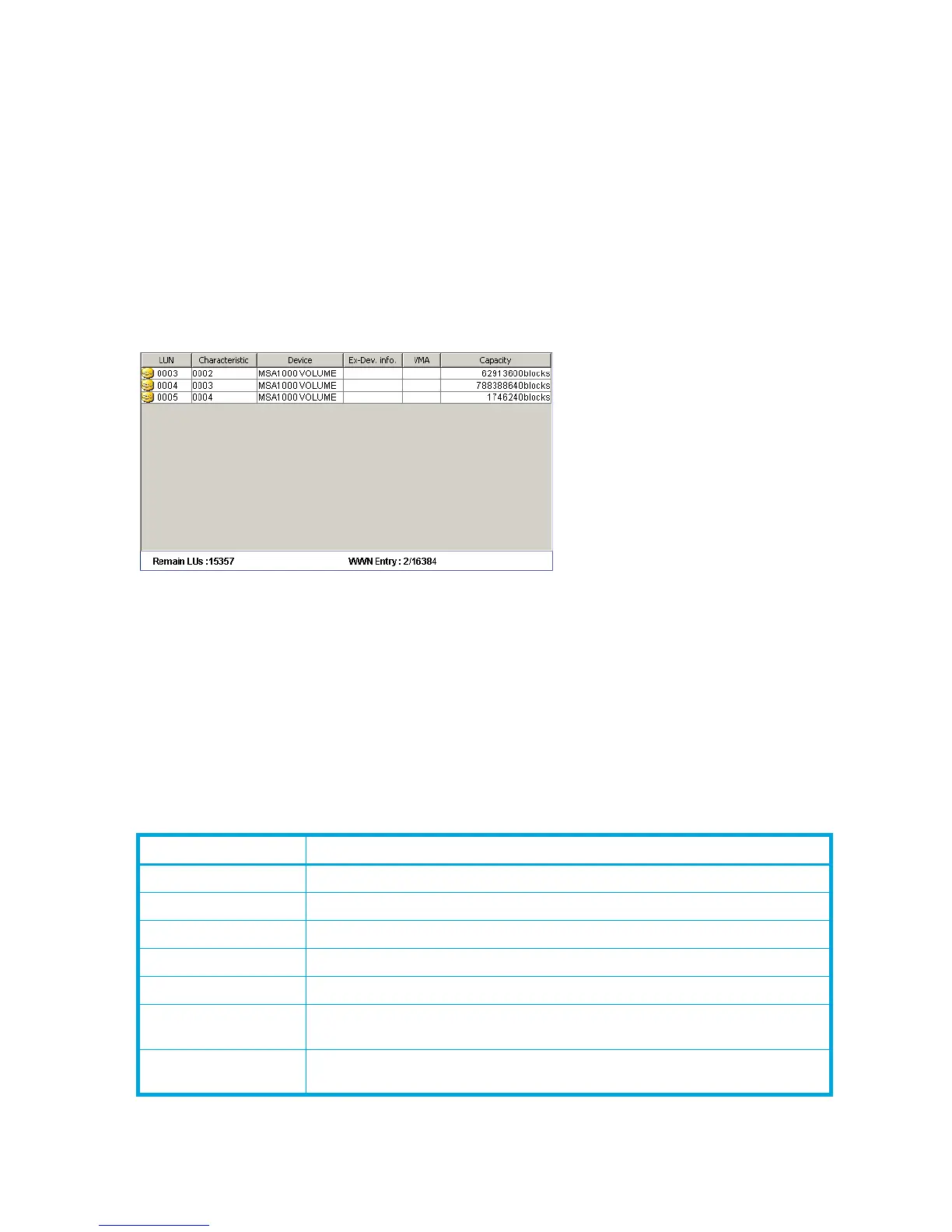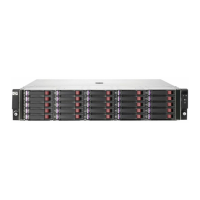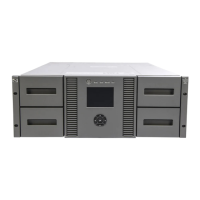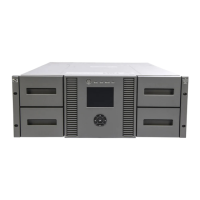46 External Storage XP for the XP12000/XP10000
Appears in the branch under the product name of the external disk array connected to the local disk
array. When you select Discovery, External Storage XP searches for external disk array ports that can
be connected, and displays their WWNs.
• WWN of the external disk array port
If you select the WWN of an external disk array port found by selecting Discovery in the Device tree,
the Device list displays information about external LUs that can be connected from the port indicated by
the WWN.
Device list
Displays information about external disk arrays corresponding to the item selected in the Device tree. You
can sort the list by displayed items. For example, to sort by LUN numbers, click LUN in the list.
When performing setting operations, the settings appear in the Preset list and the corresponding row in
the Device list appears in blue italics. For more information, see ”Preset list (LU Operation pane)” on
page 53.
Figure 20 Device list (external device selected in Device tree)
• Subsystem
Displays nothing. Subsystem is automatically selected when you select the Device tree.
• External Devices (for example, external storage group numbers currently defined for that external
device)
• Serial: Product serial number.
• Product: Product name.
• Vendor: Vendor name.
• Ex-Dev. Status: External disk array’s status. Possible values: Normal, Unknown, Blockade, Warning,
Checking, Cache Destage, and Disconnect.
Table 7 External disk array status values
LU status Description
Normal LU status is normal.
Unknown LU status has yet to be ascertained.
Blockade I/O traffic to the LU is not permitted.
Warning FC path or paths have an abnormal status. Check the status of the paths.
Checking External Storage XP is verifying configuration information defined for FC paths.
Cache Destage External Storage XP is writing all data in the XP12000/XP10000 cache memory to
the LU.
Disconnect Connection to external disk array or external LU was interrupted intentionally using
the Disconnect Subsystem or Disconnect Volume command.
